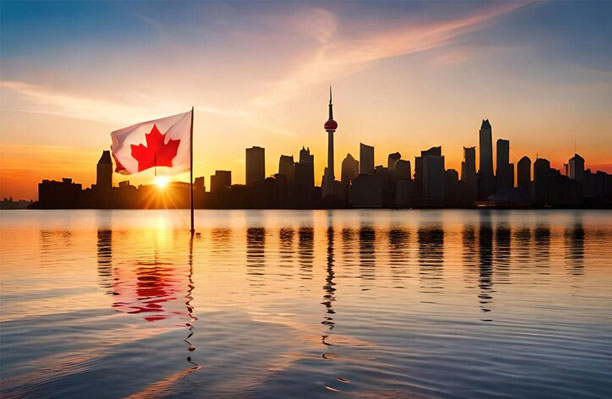Canada, often celebrated for its multiculturalism and diverse landscapes, is also renowned for its stable political system. Understanding the political structure of Canada is essential for comprehending its governance, laws, and societal functions. In this article, we will delve into the intricacies of Canada's political system, exploring its foundational principles, key institutions, electoral processes, and the roles of various levels of government.
Canada’s political landscape has been shaped by a rich tapestry of historical events, beginning with Indigenous societies’ governance structures long before European colonization. The arrival of European explorers and settlers, particularly the French and British, introduced new forms of governance that laid the groundwork for Canada’s modern political system.
One significant event in Canadian history was the Quebec Act of 1774, which recognized French civil law and allowed Catholics to practice their religion freely in Quebec. This act demonstrated early attempts at accommodating cultural and religious diversity within the colonial framework.
However, the pivotal moment in Canadian political history came with the Confederation of Canada in 1867. This transformative event saw the union of the British North American colonies into a single dominion, laying the foundation for the modern Canadian state. The British North America Act, later renamed the Constitution Act of 1867, established Canada as a federal state with a parliamentary system of government, heavily influenced by British traditions.

Canada’s constitution is a blend of written and unwritten elements, including statutes, conventions, and judicial decisions. The Constitution Act of 1867 delineates the division of powers between the federal and provincial governments, outlining their respective areas of jurisdiction.
A significant addition to the constitution came with the Constitution Act of 1982, which patriated the constitution from Britain and introduced the Canadian Charter of Rights and Freedoms. The Charter guarantees fundamental rights and freedoms, including freedom of expression, equality rights, and the rights of Indigenous peoples.
The federal government consists of three branches: the executive, legislative, and judicial.

The Prime Minister, as the head of government, leads the executive branch. The Prime Minister is usually the leader of the political party with the most seats in the House of Commons after a federal election. The Prime Minister appoints Cabinet ministers, who are responsible for various government departments and agencies. The Cabinet collectively determines national policies and priorities.

The legislative branch comprises the Parliament of Canada, consisting of the House of Commons and the Senate. Members of the House of Commons, or Members of Parliament (MPs), are elected by Canadian citizens during federal elections. The Senate is made up of senators appointed by the Governor General on the advice of the Prime Minister. Both chambers participate in the legislative process, debating and passing bills that become law upon receiving Royal Assent.

Canada's judicial branch is independent and impartial, tasked with interpreting laws and upholding the constitution. The Supreme Court of Canada is the highest court in the country, composed of justices appointed by the Governor General on the advice of the Prime Minister. The Supreme Court plays a crucial role in interpreting the Constitution and resolving disputes on matters of national significance.
Canada is divided into ten provinces and three territories, each with its own system of governance. Provincial governments have jurisdiction over areas such as healthcare, education, and natural resources, while territorial governments oversee issues unique to the northern regions, including Indigenous affairs and resource development.
Municipalities across Canada operate as local governments, responsible for delivering essential services and infrastructure within their jurisdictions. Mayors and city councils are elected by residents to represent their interests and manage municipal affairs, including zoning regulations, public transportation, and waste management.
Canadian elections are conducted through a democratic process, with regular federal, provincial, and municipal elections held according to fixed schedules. Political parties play a central role in the electoral system, presenting policy platforms to voters and competing for seats in government. The first-past-the-post electoral system is commonly used, whereby the candidate with the most votes in each electoral district wins a seat.
Canada's political structure reflects its commitment to diversity and inclusion, recognizing the rights of Indigenous peoples, linguistic minorities, and multicultural communities. Federalism allows for the accommodation of regional differences while promoting unity within a diverse nation. Multiculturalism policies celebrate Canada's cultural mosaic, fostering social cohesion and respect for pluralism.
Despite its strengths, Canada’s political system faces challenges such as reconciling Indigenous rights, addressing regional disparities, and responding to global issues like climate change. Debates over electoral and Senate reform highlight the need for ongoing dialogue and adaptation to ensure a responsive and accountable political system.
In conclusion, Canada’s political structure embodies principles of democracy, federalism, and multiculturalism, shaping its governance and societal values. By understanding its historical foundations, constitutional framework, and roles of different levels of government, Canadians can actively participate in the democratic process and contribute to the nation’s ongoing development and prosperity. As Canada continues to evolve, its political system remains integral to its identity and aspirations for the future.

Having an 'Identity Verified' badge or being 'Identity Verified' simply indicates that an individual has submitted information to complete our identity verification process or we have conducted internal verification using various authorized websites. While this process includes safeguards, it does not guarantee that the person is who they claim to be.
If you encounter any issues with this profile, please report them here. While all consultants who are verified have RCIC ID, we may not have the latest data in terms of their renewal/cancellation/discontinuation of their RCIC ID.
The "Verified Consultants" profiles are created using publicly available information, including data from the IRCC website, official consultant sites, other listing platforms, and social media. Immiperts.com is an independent platform, not affiliated with IRCC or any registered immigration consultants. To update, claim, or remove your profile, please contact us at [email protected].
╳